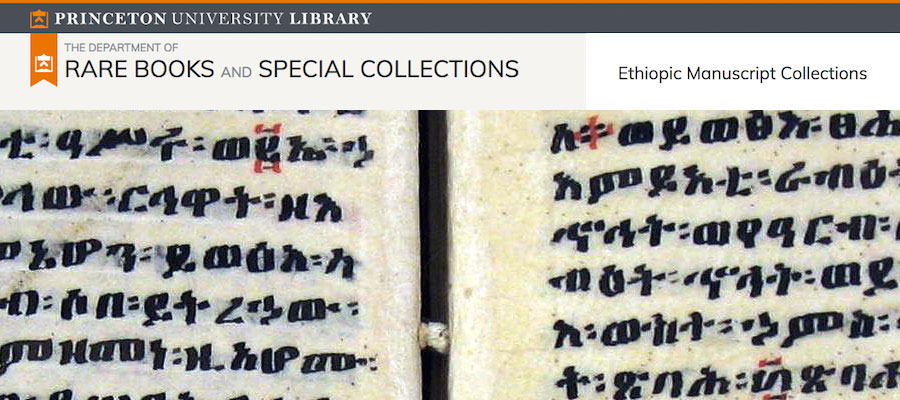Over the past century, the Princeton University Library has become one of the leading repositories for Ethiopic manuscripts in North America. The collection, one of the largest outside Ethiopia, includes nearly 180 codices and more than 500 magic scrolls (amulets), dating from the 17th to 20th centuries, chiefly written in Ge'ez, the sacred language of the Ethiopian Orthodox Church, with small amounts of text in Amharic. Text manuscripts include Gospel Books, Psalters, the Book of Enoch, homilies, liturgy, chant, saints’ lives and miracles, theology, law, and compilations of texts related to divination and popular magic. There are also several manuscripts illuminated in the Second (or late) Gondar style, which emerged in the old imperial capital of Gondar in northern Ethiopia from the 1720s and 1730s.
The principal collector was Robert Garrett, Class of 1897, who donated his collection to Princeton in 1942. He acquired the bulk of his Ethiopic manuscripts from the eminent German philologist Enno Littmann, who (with Garrett’s financial backing) led a Princeton expedition to Tigray in 1905. The following year, Littmann led a German expedition to Aksum. In the 70 years since the Garrett donation, Ethiopic manuscript holdings have continued to grow by gift and purchase. In recent years, Bruce C. Willsie, Princeton Class of 1986, has been the principal donor of Ethiopic manuscripts, especially magic scrolls.
Nearly all of the Ethiopian manuscripts at Princeton are in the Manuscripts Division, Department of Rare Books and Special Collections; plus one each in the Scheide Library and Cotsen Library, and an additional one in the Princeton University Art Museum.
Cataloging information and descriptions of the manuscripts are available in the 450-page online catalog Ethiopic Manuscripts in the Princeton University Library.
Learn More & Explore